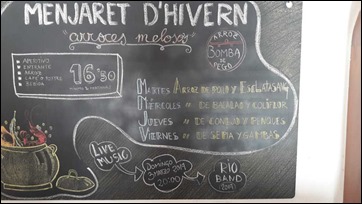 For a Boxing Day leg stretch to get the blood pumping around again, with a pleasantly sunny day we decided to go on our more usual kick-off walk up to the cross above Senija. There’re usually some butterflies hill-topping up there, too, so I took the new lighter-weight camera along to try my luck. Regrettably there weren’t any swallowtails of either description but there were the usual Wall Browns and several dicing small Blues. The blues weren’t terribly cooperative but I did identify them as Lang’s Short-tailed Blue (Leptotes pirithous). I messed up my focus-stacking – too big a step between the focus points – on the Wall Browns (Lasiommata megera) but here’s a half-way recognisable straight picture.
For a Boxing Day leg stretch to get the blood pumping around again, with a pleasantly sunny day we decided to go on our more usual kick-off walk up to the cross above Senija. There’re usually some butterflies hill-topping up there, too, so I took the new lighter-weight camera along to try my luck. Regrettably there weren’t any swallowtails of either description but there were the usual Wall Browns and several dicing small Blues. The blues weren’t terribly cooperative but I did identify them as Lang’s Short-tailed Blue (Leptotes pirithous). I messed up my focus-stacking – too big a step between the focus points – on the Wall Browns (Lasiommata megera) but here’s a half-way recognisable straight picture.
 Realising my error, I did better with a focus-stack on the way back down. Francine and I had been seeing interesting little blue flowers looking a bit scabious-like. I managed to get down on the ground and adjust my focus step to get a decent facsimile. Our suspect was not a scabious but something rejoicing in the name of Globularia alypum, or Shrubby Globularia in common speak, which sounds a bit naff, really, so let’s stick to the scientific name.
Realising my error, I did better with a focus-stack on the way back down. Francine and I had been seeing interesting little blue flowers looking a bit scabious-like. I managed to get down on the ground and adjust my focus step to get a decent facsimile. Our suspect was not a scabious but something rejoicing in the name of Globularia alypum, or Shrubby Globularia in common speak, which sounds a bit naff, really, so let’s stick to the scientific name.
And so to an educational lunch. That is, our chosen lunch of some cold meats, cheese and anchovies wasn’t especially educational but the establishment’s menu had us scratching our heads. Here is said menu.
For four days of the week, the Aleluja bar affers a fixed price menu featuring a rice dish, their arroces melosos. Keeping in mind that we were sitting looking at this at a rather sharp angle, please notice the first of these arroces for Martes [Tuesday]. It features pollo which we’re happy with [chicken] and … “es-something” that was utterly unrecognisable. Given our angle of view, we thought the letter(s) after the “es” might be either “d” or “cl”. A “d” would have got us to something like “Esdatasang” which sounded most unlikely. Actually it sounded like nothing at all. Then we tumbled that everything was written in uppercase so we thought it must be “Pollo y Esclatasang” despite that still sounding like nothing at all, certainly not like any food ingredient. Who on earth would come up with an unappetizing name like esclatasang for a food item?
“Sang” sounded related to blood to us and, on a Thailand street some years ago, we had indeed bumped into a broth containing chicken (or at least, the feet of chickens) together with smooth reddish brown lumps that we finally discovered was actually congealed chicken blood. So, maybe a precedent had been set, chicken and chicken blood, though I couldn’t quite imagine the Spanish going for it. Well, they do like their morcilla [black pudding], so who knows.
Neither of our mobile phone dictionaries professed to know either esdatasang or esclatasang, so they were no help. Finally I did an Internet search and, lo and behold, up popped Esclatasang. Strewth! Our mystery arroz ingredient was some kind of prized mushroom. Not only that but our considered blood connection had been somewhat inspired, the actual mushroom apparently being Lactarius sanguifluus or Bloody Milkcap in common speak.
So, there we have it, on Tuesdays you could pop into the Alejuya bar and enjoy a steaming bowl of soupy rice with chicken and bloody milkcaps.
Live and learn.


I insist you ask to be shown the Bloody Milkcaps and get a photo….. Are they foraged?
We’ve seen them for sale on the markets, or at least, I think we have – they have a rather unattractive green mottling on the caps. If cut, they apparently ooze a red liquid which turns green when it dries. So, I imagine they are grown commercially.